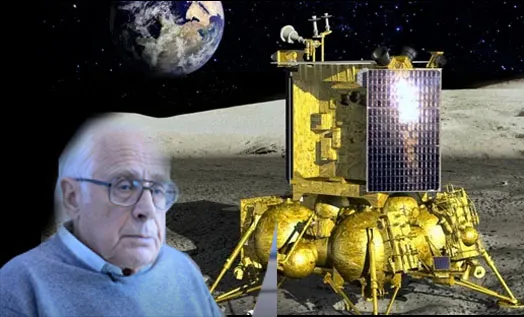A 90-year-old Russian astronomer, who played a pivotal role as a consultant in the ill-fated Luna-25 lunar mission, has been hospitalized following the spacecraft’s crash on the Moon. The incident marked an abrupt conclusion to Russia’s inaugural lunar expedition in over four decades.
The scientist in question, Mikhail Marov, is currently receiving medical care in Moscow after experiencing a sudden decline in his health triggered by the Luna-25 spacecraft’s impact with the lunar surface. Marov’s involvement in the mission was extensive, and he expressed his sorrow upon learning of the crash.
In a conversation with the Moskovsky Komsomolets newspaper, Marov conveyed his disappointment and sadness over the spacecraft’s failure. He referred to the Luna-25 mission as his potential “last hope” to witness a revival in Russia’s lunar program. Marov voiced optimism that the crash’s underlying causes would undergo a thorough investigation.
While under medical supervision, Marov reflected on the magnitude of the lunar mission’s failure, describing it as a significant part of his life. He remarked, “How can I not feel concerned? This mission has been deeply intertwined with my life. The impact has been incredibly challenging.”
On August 19, a catastrophic mishap occurred during a critical maneuver, resulting in the Luna-25 spacecraft’s failure. The spacecraft lost contact with mission control as it maneuvered into its designated pre-landing orbit.
Roscosmos, the space agency responsible, issued a statement explaining that an unforeseen problem during this crucial phase led to the loss of communication with the spacecraft.
Roscosmos officially announced that the spacecraft deviated into an unanticipated orbit and ultimately collided with the lunar surface, resulting in its demise. The Luna-25 mission held significant importance in Russia’s efforts to reinvigorate lunar exploration.
Its intended landing site at the Moon’s south pole was of particular scientific interest due to its potential reservoirs of water ice—a valuable resource for future lunar and extraterrestrial missions.
The mission’s unfortunate failure had been intended as a stepping stone for more advanced lunar ventures. It was envisioned to pave the way for subsequent missions, such as Luna-26 and Luna-27, which were slated to undertake more intricate assignments, including the collection and return of lunar soil samples.
